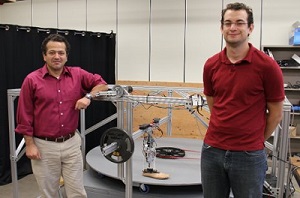Humans rarely walk the straight and narrow; something’s always in the way. So Michigan Tech scientists are developing a computer-controlled prosthesis to make it much easier for amputees to turn as they walk.
In cooperation with a Mayo Clinic scientist, researchers at Michigan Tech are taking a giant step toward solving the problem. They are making a bionic foot that could make an amputee’s walk in the park feel, well, like a walk in the park.

These computerized artificial legs have pressure-sensitive sensors on the bottom of the foot that detect how the amputee is walking. The sensors instantaneously send signals to a microprocessor, which in turn adjusts the prosthesis to make walking more natural.
For the full story see Michigan Tech News
Published in Tech Today by Marcia Goodrich, magazine editor